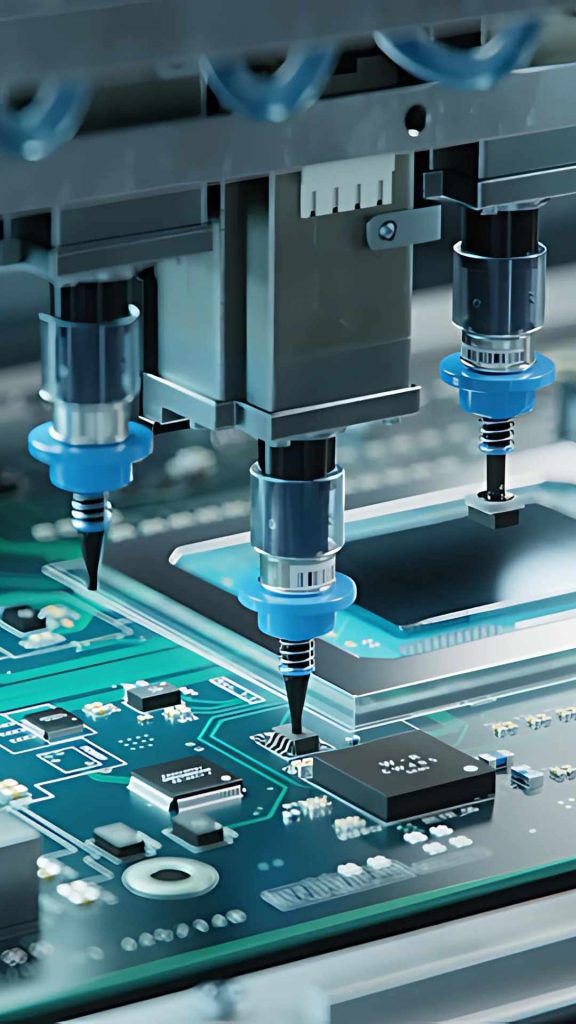Wearable technology has seamlessly woven itself into the fabric of our daily lives. From the smartwatch on your wrist tracking your fitness to the wireless earbuds delivering crystal-clear audio, these tiny devices pack an astonishing amount of functionality into impossibly small spaces. They are marvels of modern engineering, operating for hours on tiny batteries while wirelessly communicating with the world and monitoring our biometrics with incredible accuracy. But have you ever stopped to wonder how all of that technology fits? What engineering magic is required to cram a powerful processor, multiple sensors, a battery, and wireless radios into a device that can curve around a human wrist? The answer lies in a suite of advanced Printed Circuit Board (PCB) and assembly technologies that push the very limits of miniaturization. Let’s perform a virtual “teardown” to explore the key technologies inside a typical modern wearable and understand the manufacturing precision required to bring them to life—a level of precision and craftsmanship we proudly uphold at BENCOR.
The Overarching Challenge: Miniaturization Without Compromise
The core engineering challenge of any wearable device is a battle for every cubic millimeter. Designers must deliver a feature-rich experience in a form factor that is comfortable, lightweight, and aesthetically pleasing. This isn’t like designing a desktop computer with ample room for components and airflow. In a wearable, there is no wasted space. Every design choice is a trade-off between size, battery life, features, and thermal performance. This relentless drive for miniaturization means that the PCB is no longer just a simple substrate for holding components; it becomes a highly optimized, three-dimensional component in its own right, leveraging some of the most advanced fabrication and assembly techniques available.

Inside the Enclosure: Key PCB Technologies Revealed
If we could peel back the sleek casing of a modern smartwatch or fitness tracker, we would find a dense, intricately layered electronic ecosystem. Here are the key PCB technologies that make it all possible.
- The first thing you’d notice is that the circuit board is likely not a flat, green rectangle. Traditional rigid PCBs are completely unsuitable for the curved, compact, and non-uniform shapes of wearable devices. To solve this, engineers rely on Flexible PCBs (Flex Circuits). These are made from a thin, bendable substrate material like polyimide, allowing the circuit to wrap around internal components, conform to the curved housing of a watch, or snake through the narrow stem of an earbud.
- More commonly, you’ll find a Rigid-Flex PCB. This brilliant hybrid technology combines the best of both worlds. It features one or more small, rigid board sections—perfect for densely mounting critical components like the main processor and memory—interconnected by thin, flexible ribbon-like sections. These flexible ribbons act as integrated cables, eliminating the need for bulky, unreliable, and space-consuming wire harnesses and connectors. This not only saves an immense amount of precious internal space but also dramatically improves reliability by reducing the number of potential points of failure (solder joints for connectors).
The main rigid sections of the PCB would look incredibly dense, with connections far too complex for standard PCB technology. This is made possible by High-Density Interconnect (HDI) fabrication techniques. HDI is a set of advanced manufacturing processes that dramatically increase the amount of wiring that can be routed in a given area.
The key features of HDI that you would find are:
- Microvias: Unlike traditional vias that are mechanically drilled through all layers of a board, microvias are laser-drilled, microscopic holes that connect only adjacent layers. They are significantly smaller, allowing for more routing space for signals and power. They are often “stacked” or “staggered” through multiple layers to create complex connections.
- Fine Lines and Spaces: HDI technology allows for the creation of much narrower conductive copper traces and smaller insulating gaps between them, enabling more signals to be routed in the same amount of space.
- Via-in-Pad: With HDI, vias can be placed directly inside the surface mount pads of a component, then filled with conductive material and plated over. This saves a huge amount of space on the board surface, allowing for tighter component placement and more direct routing paths, which is critical for high-speed signals.
For the complex processors and sensors inside a modern wearable, HDI is not a luxury; it is an absolute necessity.
Peering closer at the board, the individual passive components—the resistors, capacitors, and inductors—would be nearly invisible to the naked eye. Wearable designs make extensive use of ultra-small components in packages like 0201 (measuring just 0.6mm x 0.3mm) and, in the most extreme cases, 01005 (a mind-boggling 0.4mm x 0.2mm, smaller than a grain of sand). The main integrated circuits (ICs) would be in fine-pitch packages like Ball Grid Arrays (BGAs) or Quad Flat No-leads (QFNs), where the spacing between the solder connections is incredibly small.
In many advanced wearables, the heart of the device is a System-in-Package (SiP) module. A SiP is a single, encapsulated component that is, in itself, a complete electronic system. Inside this small package, multiple silicon dies (like the main application processor, memory chips, power management IC, and wireless radios) are stacked vertically and interconnected. A SiP acts as a pre-integrated, pre-tested subsystem that the wearable designer can treat as a single component. This approach provides the ultimate level of miniaturization, simplifying the main PCB design and saving a tremendous amount of space.
The Assembly Challenge: Precision on a Microscopic Scale
These incredible technologies create a formidable challenge for the manufacturing and assembly process. It’s one thing to design such a compact device; it’s another thing entirely to build it reliably in volume. The assembly of a wearable PCB is an exercise in microscopic precision.
Handling and placing components the size of a dust speck requires extremely precise, high-speed SMT (Surface-Mount Technology) pick-and-place machines with advanced vision systems. The process of printing solder paste onto the board must be perfect; for fine-pitch BGAs and 01005 components, 3D Solder Paste Inspection (SPI) is essential to ensure the exact volume of paste is deposited every time. After soldering, verifying the connections is impossible by eye. Automated Optical Inspection (AOI) is needed to check for visible defects, and for the hidden joints under BGAs and SiPs, Automated X-Ray Inspection (AXI) is the only way to guarantee a perfect connection.
The BENCOR Perspective: The Craftsmanship of Miniaturized Assembly
At BENCOR, we view the assembly of these highly complex, miniaturized devices as a form of modern American craftsmanship. It demands more than just machines; it requires deep process knowledge, meticulous attention to detail, and a workforce of highly skilled technicians. This is precisely the kind of high-value, high-precision manufacturing that defines American technological leadership and drives innovation forward.
We are committed to investing in the state-of-the-art equipment—from high-precision SMT lines to advanced inspection systems—that is required to assemble these demanding products. But more importantly, we invest in our people. Our team of skilled American technicians and engineers possesses the expertise and dedication to handle the unique challenges presented by wearable technology. Our ISO 9001:2015 certified quality management system provides the rigorous framework necessary to ensure the consistency and reliability that consumers expect from these intimate devices. When a product is designed to be worn on the body and trusted with personal data, the quality of its assembly is paramount.
Conclusion: The sleek and simple exterior of a modern wearable device belies a world of incredible technological complexity within. A virtual teardown reveals a sophisticated ecosystem of flexible and rigid-flex PCBs, high-density interconnects, microscopic components, and highly integrated System-in-Package modules. These technologies are true feats of engineering, and they present an equally impressive challenge for the manufacturing process. The success of the wearable technology revolution is a testament not only to brilliant design but also to the precision, quality, and expertise of the manufacturing partners who bring these tiny, powerful devices to life. BENCOR is proud to be that capable, quality-focused American partner, ready to help build the next generation of wearable innovation.




